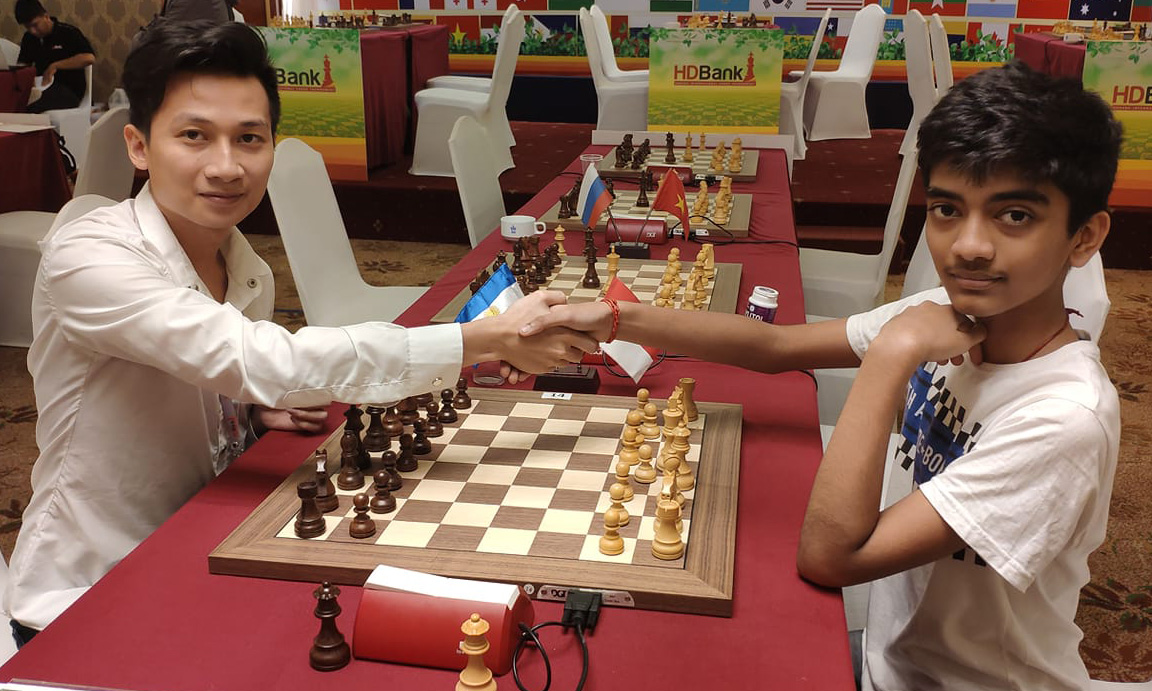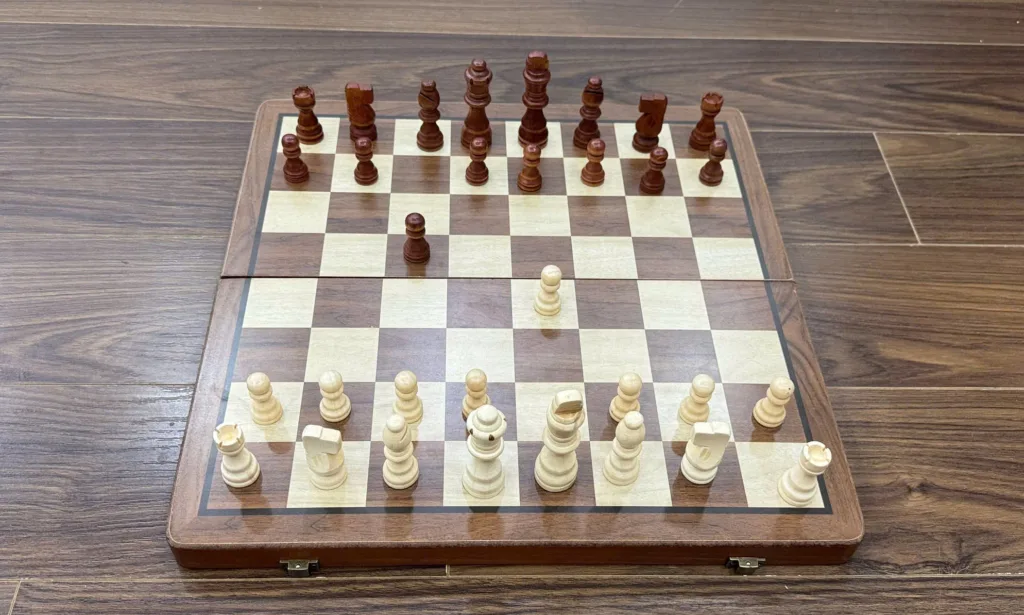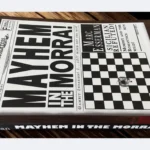Explore the Sicilian Defense – a bold counterattack with rich complexity, sharp pawn structures, and dynamic battles on both flanks.
The Sicilian Defense begins with:
1. e4 c5
This isn’t just a sidestep from symmetry, it’s a signal. Black chooses imbalance. Instead of mirroring 1.e4 with …e5, Black attacks the center from the side, luring White forward and then striking back with counterplay.
- Opening Statements
- The Main Plan
- Black’s Pawn Structures
- A Classic White Attack in the Sicilian
- Modern Attack vs. the Dragon
- Ideas for White
- Ideas for Black
- Key Variations
- Anti-Sicilian Weapons
- Final Thoughts
Opening Statements
White says:
“Your c-pawn move gave me control of the kingside, and I’m going to use it to launch a direct assault on your king. Pawns? Pieces? I’m throwing everything at you.”
Black says:
“Fine. While you march forward on the kingside, I’ll counter on the queenside. If I can’t checkmate you, I’ll rip open your weak pawns and win the endgame.”
The Main Plan
The usual White approach is:
2. Nf3 followed by 3. d4, opening the center. This leads to the Open Sicilian, where both players fight with different plans:
- White: plays aggressively on the kingside.
- Black: counterattacks on the queenside, using dynamic pawn structures.
Black’s Pawn Structures
After 1.e4 c5 2.Nf3 d6 3.d4 cxd4 4.Nxd4, Black has several major setups, each with unique ideas:
The Dragon Formation (…d6 + …g6)
Solid and sharp. Black fianchettos the bishop to g7 and casts long-term pressure down the h8–a1 diagonal.
- Don’t play …e5 – it blocks your g7 bishop and weakens d6.
- Attack down the c-file and push queenside pawns (…a6, …b5).
The Scheveningen Formation (…d6 + …e6)
A flexible structure. Black builds a strong center and waits for the right time to push …d5.
- Look for breaks like …b5 and …d5 to challenge White’s grip.
- Beware: White may attack with f4–f5 or g4–g5.
The Boleslavsky Formation (…d6 + …e5)
Highly strategic. The entire battle centers around the d5 square.
- If White plants a knight on d5, you’re in trouble.
- If you manage …d5, you’ve equalized, or better.
A Classic White Attack in the Sicilian
White avoids trades with Nd4–b3, tucks the king away with Kh1, and is ready to throw pawns: g4, f4–f5, or g4–g5. The queen often shifts: Qd1–e1–h4/h5.
Modern Attack vs. the Dragon
Often played with Bf1–c4 and early Be3–h6 to trade off the dangerous g7 bishop. Then h4–h5 (sometimes even sacrificed!) opens lines for a mate on h7 or h8.
Ideas for White
- Don’t play Bf1–b5 in the Open Sicilian, exchanges help Black.
- Avoid Nd4xc6 unless followed by e4–e5.
- Push pawns on the kingside, it’s often worth sacrificing one.
- If Black plays …e5 before …a6, strike with Nd4–b5, targeting d6.
- Against the Dragon: if Be3, you must support it with f3 or Be2 to prevent …Ng4.
- Consider Anti-Sicilians if you’re not ready to study deep theory. The Open Sicilian requires preparation.
Ideas for Black
- The main plan: attack on the queenside – …a6, …b5, …Qc7, …Rc8.
- In the Dragon, don’t play …e5. It locks in the bishop and weakens d6.
- Avoid …e5 if White has already played Bc4 or Bg5, those moves target d5.
- Don’t waste time with …a6 in the Dragon, tempo matters.
- If White attacks the kingside, strike in the center with …d5 or …e5.
- Know your Anti-Sicilian lines, they’re common and dangerous.
Key Variations
The Dragon Variation
- e4 c5
- Nf3 d6
- d4 cxd4
- Nxd4 Nf6
- Nc3 g6
Black prepares …Bg7 and castles kingside. White’s strongest weapon: the Yugoslav Attack with Be3, f3, Qd2, 0-0-0, g4, h4, an all-in assault.
The Najdorf Variation
- e4 c5
- Nf3 d6
- d4 cxd4
- Nxd4 Nf6
- Nc3 a6
One of the most ambitious lines. The …a6 move delays Black’s central commitment and sets up …b5 and …e5 at the right moment. White has many options: Be3, Bg5, f4, Bc4…
The Classical Variation
- e4 c5
- Nf3 d6
- d4 cxd4
- Nxd4 Nf6
- Nc3 Nc6
A rich battleground. White can play Be2, Be3, Bc4, Bg5, and Black may transpose into the Scheveningen (mentioned above).
Anti-Sicilian Weapons
The Morra Gambit
- e4 c5 2. d4 cxd4 3. c3 dxc3 4. Nxc3
White sacrifices a pawn for rapid development and initiative.
The Closed Sicilian
- e4 c5 2. Nc3 Nc6 3. g3
White aims for a slow buildup with Bg2, f4, Nf3, d3, and a kingside attack.
The Alapin Variation
- e4 c5 2. c3
White avoids theory-heavy lines, aiming for d4 later. Good against unprepared opponents.
The Bb5+ Line
- e4 c5 2. Nf3 d6 3. Bb5+
White steers the game into Ruy Lopez-style waters. If you’re a Ruy Lopez player, this line feels familiar.
Final Thoughts
The Sicilian Defense earned its fearsome reputation not just from its sharp tactics and dynamic positions, but also from decades of analysis and real-world success.
Back in the 1800s, it was the most studied opening because players were winning with it, and that constant feedback loop only made it stronger. The Marshall Attack, once White’s go-to method of challenging the Sicilian, dominated for over a decade until the Sicilian evolved to neutralize it. That cycle of challenge and adaptation has continued ever since.
Today, with powerful chess engines and massive databases, the Sicilian remains the most popular response to 1.e4 – especially below the elite level. Data from master-level games (2300+) shows White winning only about 6% more than Black in the Sicilian, narrower than almost any other opening. Interestingly, at club level, Black scores better, suggesting the Sicilian is more forgiving to play than it is to face.
Only at the very top – 2600 Elo and above- do grandmasters start to favor 1…e5 for its solidity and drawish tendencies. So while the Sicilian may be sharp and complex, it’s also proven, reliable, and surprisingly practical for ambitious players looking to win with Black.
The Sicilian Defense is a universe unto itself. It rewards preparation, aggression, and precision. Every pawn structure tells a different story. If you want rich complexity, dynamic imbalance, and endless variety. Welcome to the Sicilian.
You’re not playing safe. You’re playing to win.

I’m Xuan Binh, the founder of Attacking Chess, and the Deputy Head of Communications at the Vietnam Chess Federation (VCF). My chess.com and lichess rating is above 2300. Send me a challenge or message via Lichess. Follow me on Twitter (X) or Facebook.







3 thoughts on “What Makes the Sicilian Defense So Dangerous?”
Comments are closed.